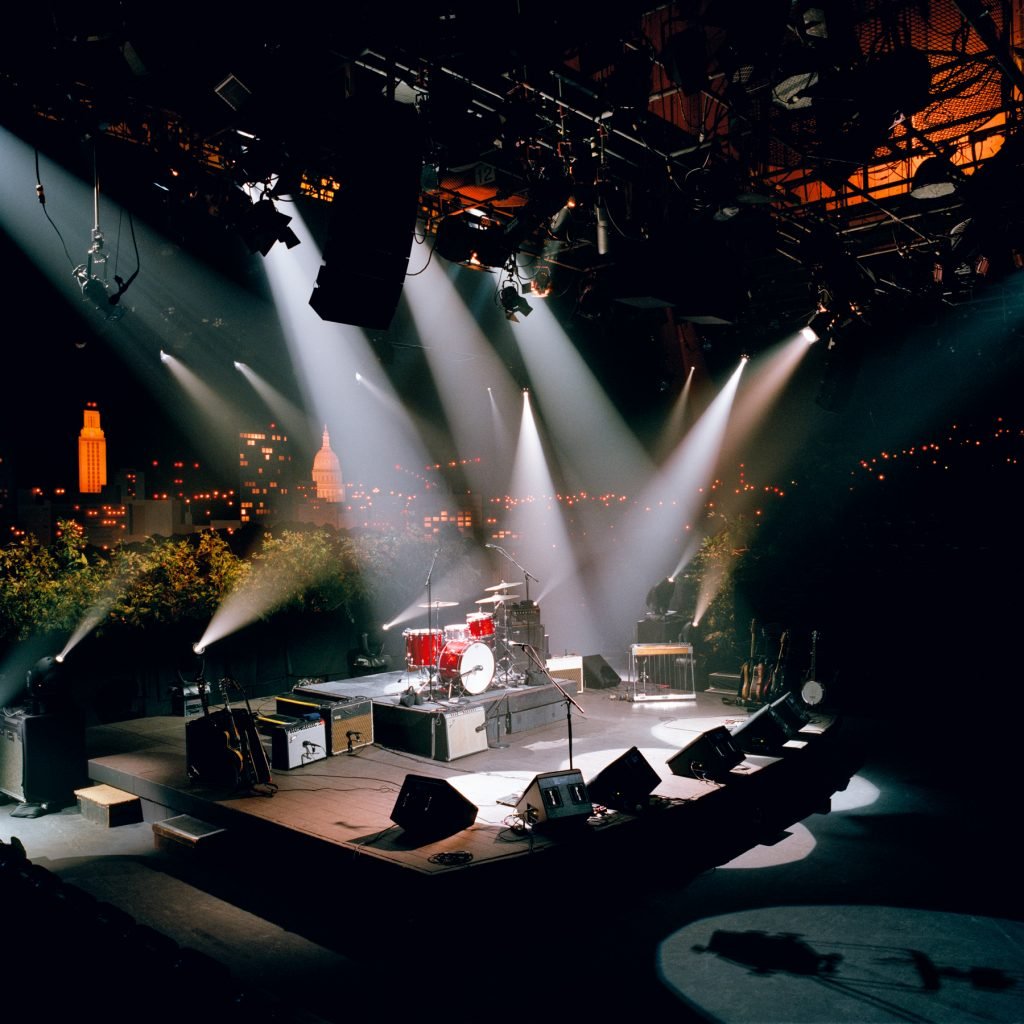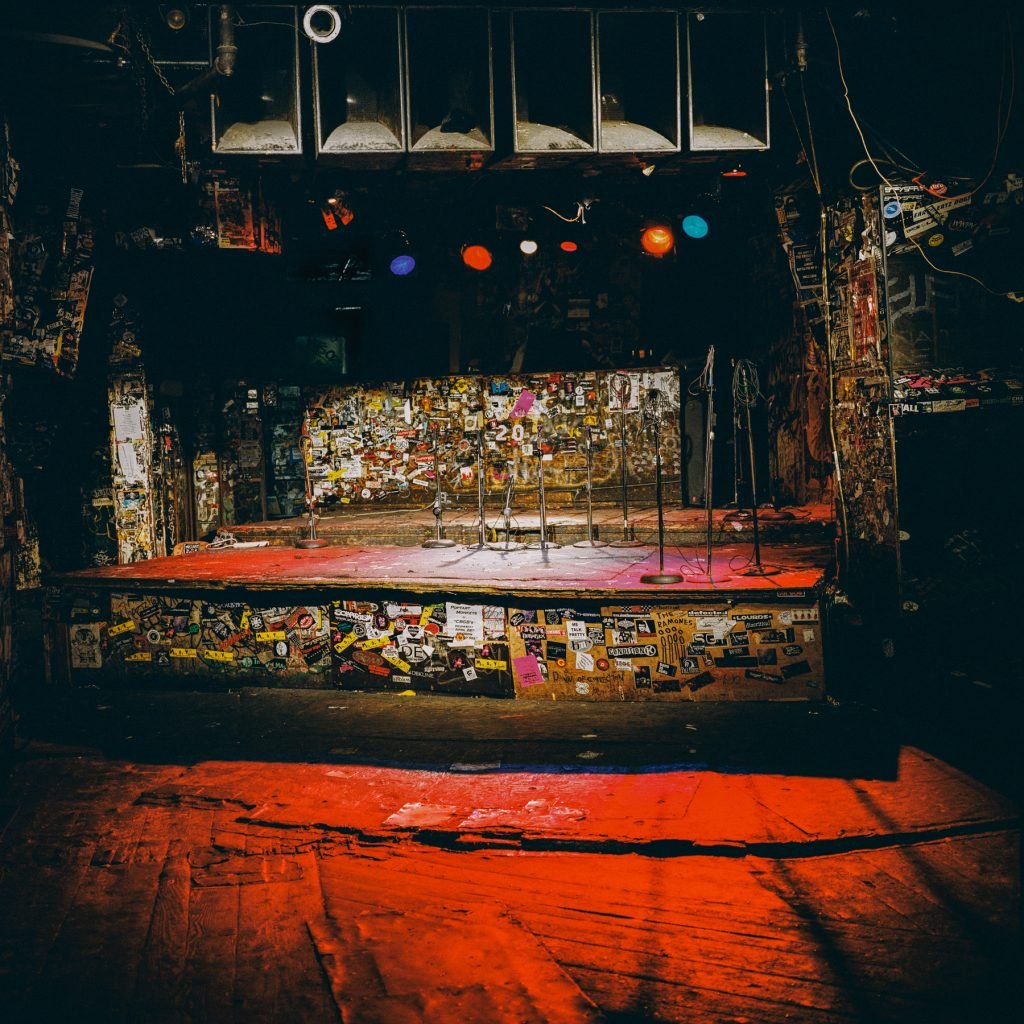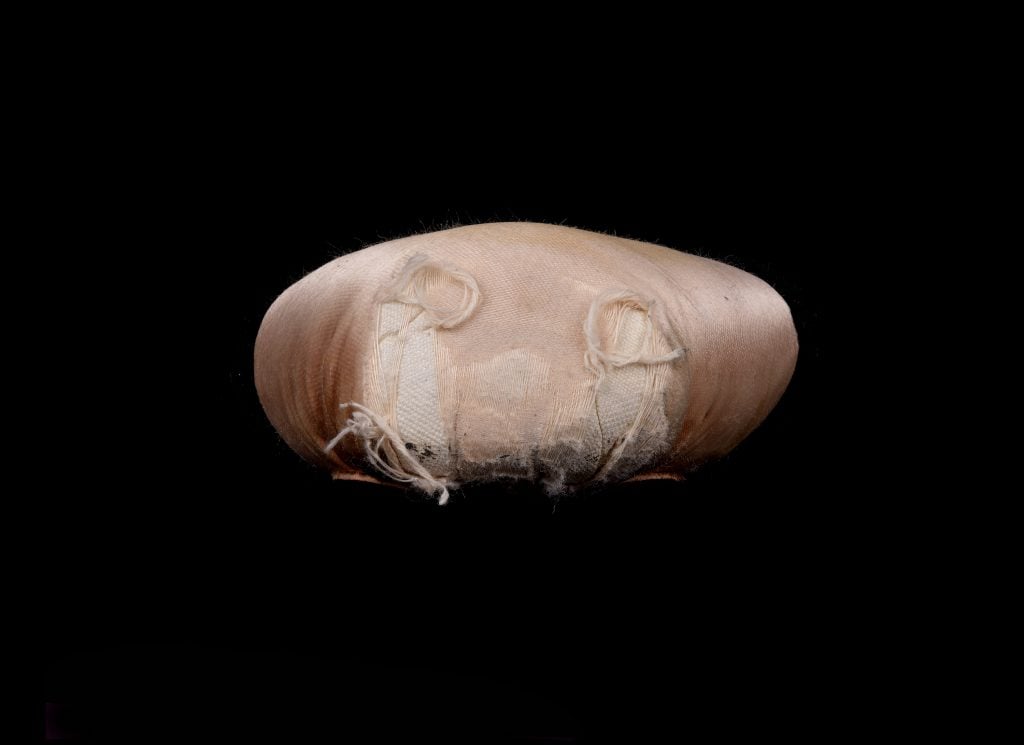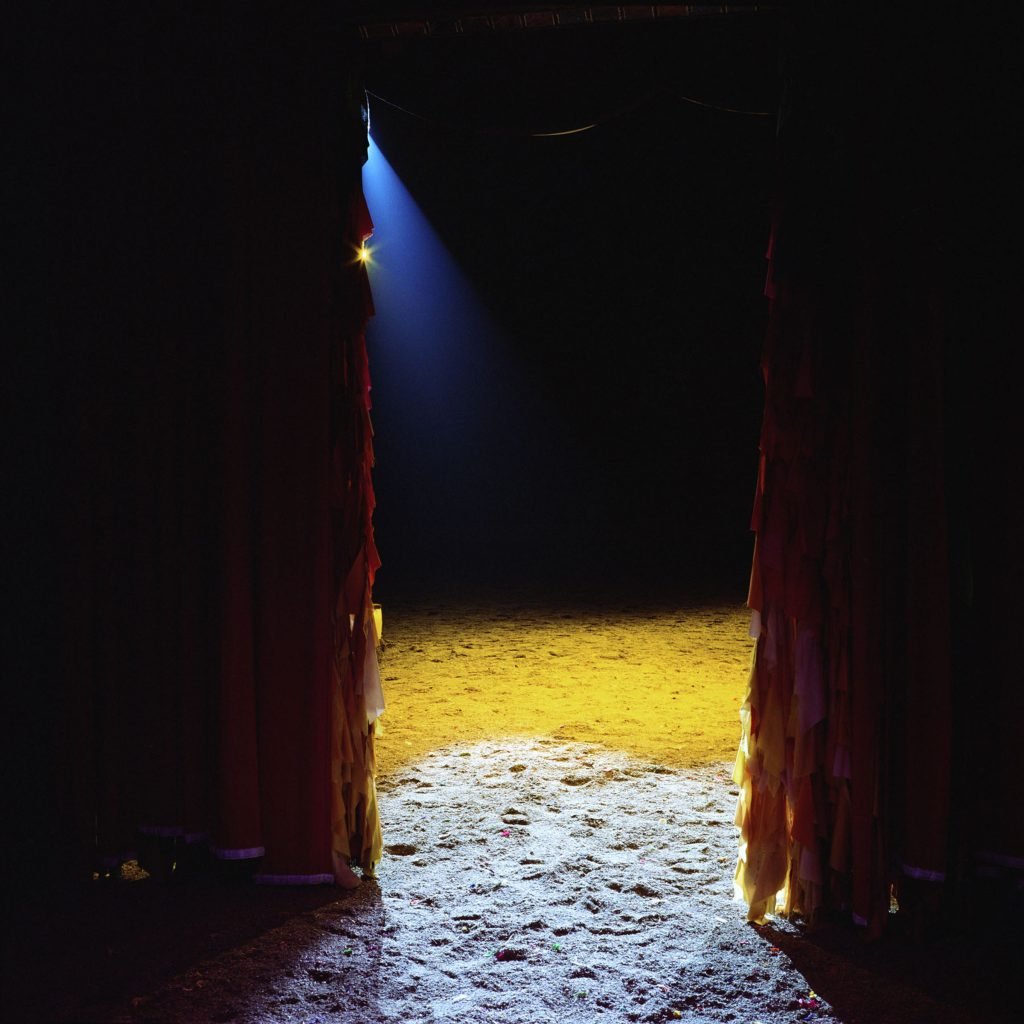Gallery Network
7 Questions for Photographer Rhona Bitner on How Rock n’ Roll and Ballet Have Fueled Her Decades-Long Practice
The artist's first retrospective "Resound" is on view at the Wellin Museum of Art through December 9, 2023.

The artist's first retrospective "Resound" is on view at the Wellin Museum of Art through December 9, 2023.

Artnet Gallery Network

New York-based artist Rhona Bitner (b. 1960) maintains a practice widely recognized for its ongoing series that focuses on collective and arts-based culture. Her photographic series “Listen” captures myriad sites of music making and listening—from ticketed arenas to studios—across America, a visual map of rock n’ roll’s theaters. Another series, “Pointe” meanwhile, takes a micro look at discarded pointe shoes, indexical of the dance they were used for.
Now Bitner is the subject of her first museum retrospective, “Resound,” currently on view at the Wellin Museum of Art at Hamilton College, offering viewers the opportunity to explore and discover images from some of the artist’s most important series. Johnson-Pote Director of the Wellin Museum of Art Tracy L. Adler says, “Much of Rhona Bitner’s photographic practice focuses on the spaces, people, and objects related to performance—from popular music and the circus to ballet and classical theater, among other subjects—to create images that evoke personal and collective memory.”
Below, read an excerpted conversation with the artist on her work and new exhibition.

Rhona Bitner, FAME Recording Studios, Muscle Shoals, AL, May 8, 2008 (2008). From the “Listen” series (2006–2018). © Rhona Bitner / ADAGP, Artist’s Rights Society, New York. Courtesy of the artist.
Tell us about the Wellin Museum show.
It is my first solo museum survey show and brings together seven series featuring over 30 years of work. I have never seen it all installed together so it is particularly overwhelming and humbling. The exhibition includes four longitudinal projects: “Circus,” “Stage,” “Listen,” and “Pointe,” as well as two highly personal works: “Headshot,” which depicts a childhood toy, and “Ghost Light,” which is a series of photos I made of New York City, my hometown, during the Covid-19 lockdown. The show ends with “Tour,” which is a new direction for me, exploring fandom and the audience.
The show includes works from your “Listen” series, which is also the name of a book of your photos published by Rizzoli in 2022. Can you tell us more?
“Listen” was a 13-year journey, or odyssey, to visit and photograph over 400 studios, concert halls, arenas, high schools, bars, ballrooms, prisons, and fields across 26 states and 89 cities—where the history of American popular music is engraved. There are 14 photographs in the Wellin Museum exhibition out of the 395 photographs in the project and the 299 represented in the book. It is wonderful to see them printed full-size in the gallery.

Rhona Bitner, CBGB, New York, NY, October 4, 2006 (2006). From the “Listen” series (2006–2018). © Rhona Bitner / ADAGP, Artist’s Rights Society, New York. Courtesy of the artist.
What was the inspiration for the “Listen” series?
The inspiration for the series grew out of a sense of urgency when the imminent closure of CBGB on the Bowery was announced in 2006, and I was determined to photograph it before it shuttered for good. While I stood in that space, hallowed ground to many, including myself, I could hear the reverberations of all the groundbreaking music that the club nurtured and showcased. It got me thinking about the other spaces across the United States that bore witness to the soundtrack of 20th-century American popular music.
There is also a series of works centered on the ballet. Can you talk about that?
The “Pointe” series includes extreme close-up photographs of the toe of the pointe shoe printed on a monumental scale. The worn ballet shoes were found in a box discarded on the street a decade ago. I was surprised at how hard the shoes were as if they were made of wood. The more I learned about ballet, the more in awe I was, and the more parallels I saw between what it takes to be a ballerina and what it takes to be a woman. The dancer appears to be effortless and graceful, but is, in reality, tough, strong, courageous, and enduring.

Rhona Bitner, 4.R.Bullshorn (2021). From the “Pointe” series (2020–ongoing). © Rhona Bitner / ADAGP, Artist’s Rights Society, New York. Courtesy of the artist.
There are 77 works in the Wellin show from the “Ghost Light” series. Tell us more?
The 77 photographs are meant to represent the 77 days of confinement in New York City during the early days of COVID-19 in 2020. To get through that time, I went out every morning and walked the deserted streets and made photographs. To see the city emptied of all activity, life, and energy was heartbreaking. I wandered the neighborhoods that held my memories—it was an experience both collective and personal.
Are there artists who have been an inspiration for your work?
Joan Jonas. Cezanne. Atget, Ed Ruscha’s photo books, the Bechers, and any artist working in a methodical, rigorous way. Zoe Leonard for her process and structure. Or Martha Rosler. Louise Lawler. On Kawara made me think about time. I thought about Berenice Abbott while I was making “Ghost Light.” Edgar Degas’ pastel Study of a Theater Box (1880) and Titian’s Man with a Glove (ca. 1520). Tacita Dean. Jason Moran for how fierce his work is and how he is blurring the lines between disciplines so elegantly.

Rhona Bitner, BA1 (2003). From the “Stage” series (2003–2008). © Rhona Bitner / ADAGP, Artist’s Rights Society, New York. Courtesy of the artist.
Is there anything else you’d like to share about your work?
All of my work evolves from the notion that both the camera and the theater are black spaces in which an image appears. That the lens and the stage act as openings through which we, the audience, can glimpse the world outside that dark space with a new perspective or understanding. I often refer to this Samuel Beckett quote from Company: “A voice comes to one in the dark. Imagine.”
“Rhona Bitner: Resound” is on view at the Wellin Museum of Art, Hamilton College, through December 9, 2023.